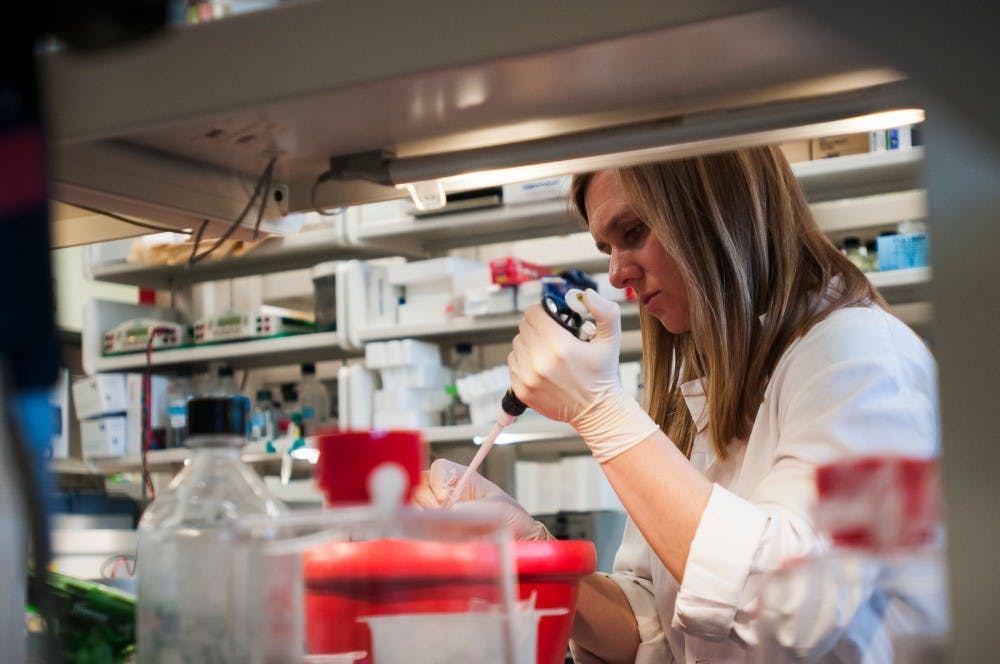
A chemical compound that dramatically reduces the spread of the most fatal form of skin cancer cells has been discovered in a small lab led by professor and chair of the Department of Pharmacology and Toxicology Richard Neubig at MSU.
“This is not a drug yet,” Neubig said. “We still have a number of years of development before we could ever test it on people, unfortunately. We would like to be able to do things right away, but it takes a long time to get FDA approval.”
Neubig said the research lab was able to identify a single pathway in melanoma cells where the cancer spreads rapidly. When this particular compound was used, the pathway was blocked, therefore shutting down cancer migration. So far, MSU researchers have been the first to target this pathway by experimenting with human melanoma cells on mice.
Among the researchers in the lab was research associate and postdoctoral student Kate Appleton.
“This (study) opens up a number of opportunities and projects for undergraduates, graduates and postdocs such as me,” Appleton said. “From this study, many projects have branched off, we have a lot more questions and issues we would like to address with regard to melanoma and how this compound potentially benefits the treatment of melanoma.”
Neubig said the project began five years ago when he was still at University of Michigan, but once Appleton was hired two years ago, just a year after Neubig came to MSU, the project picked up speed. Appleton’s assistant was nutritional sciences sophomore Riya Malhotra, who was a freshman at the time of the research.
“Riya came in and within a few months she was successfully doing technical assistance for this study,” Appleton said. “I think the study is very important to Michigan State University and absolutely for the department and the opportunity for undergraduate students such as Riya to come in and not only learn basic research techniques, but to also be a part of cutting edge research is fantastic.”
After working in Neubig’s lab, Malhotra was one of only four students who received a summer undergraduate research fund for the American Society for Pharmacology and Experimental Therapeutics, or ASPET, program. Her summer project revolved around looking at the potential role of the skin cancer research finding in ocular melanoma, eye cancer. Appleton said she believes this is an example of how this study will impact similar research and new projects.
“I felt so grateful for this opportunity, to get it at the beginning of my college years,” Malhotra said. “I do realize it’s really important research, and based on what I’ve seen in the lab and what we’ve conducted it looks like it’s very promising research, too.”
Still, there is more research to come. Project director for the MSU Gran Fondo cycling fundraiser event Lou Candiotti said every year, participation increases and funding will go towards skin cancer research.
“One of the things that we’re very interested in now is the role of this pathway and the survival of the cancer cells,” Neubig said. “Our earlier study was related to the metastasis and spread, but we’re also very interested in the ability of this pathway to work with other cancer drugs to actually kill the cancer cells. We’ve got a very exciting work on that coming along.”


